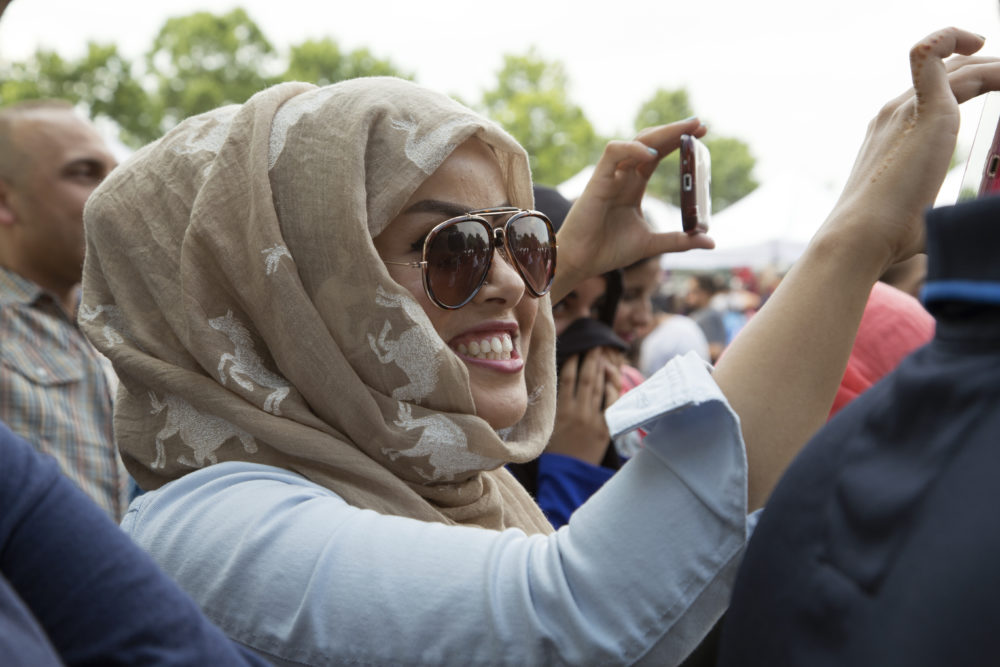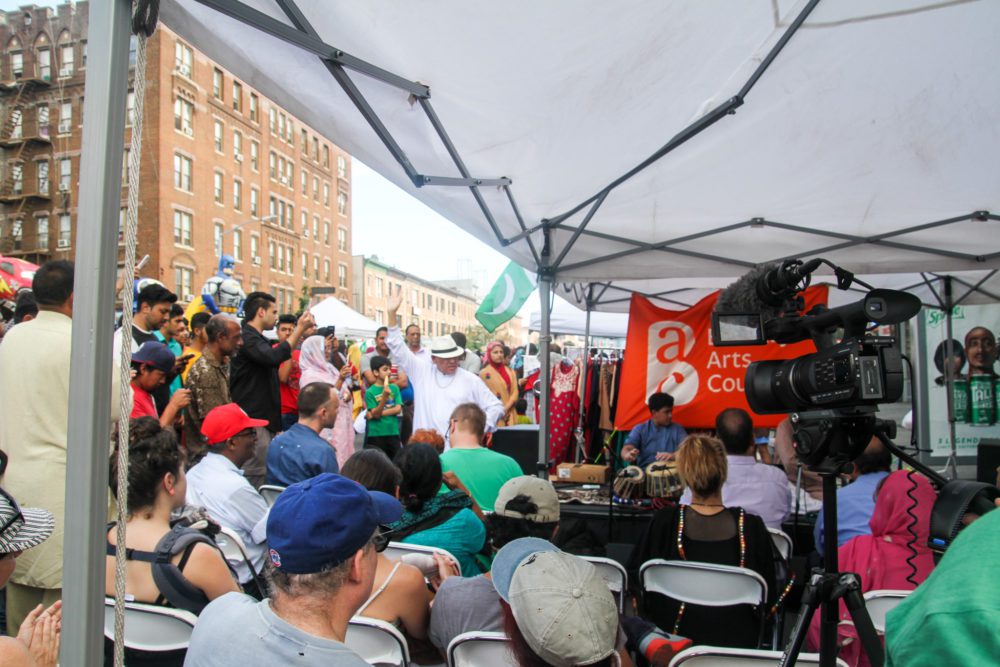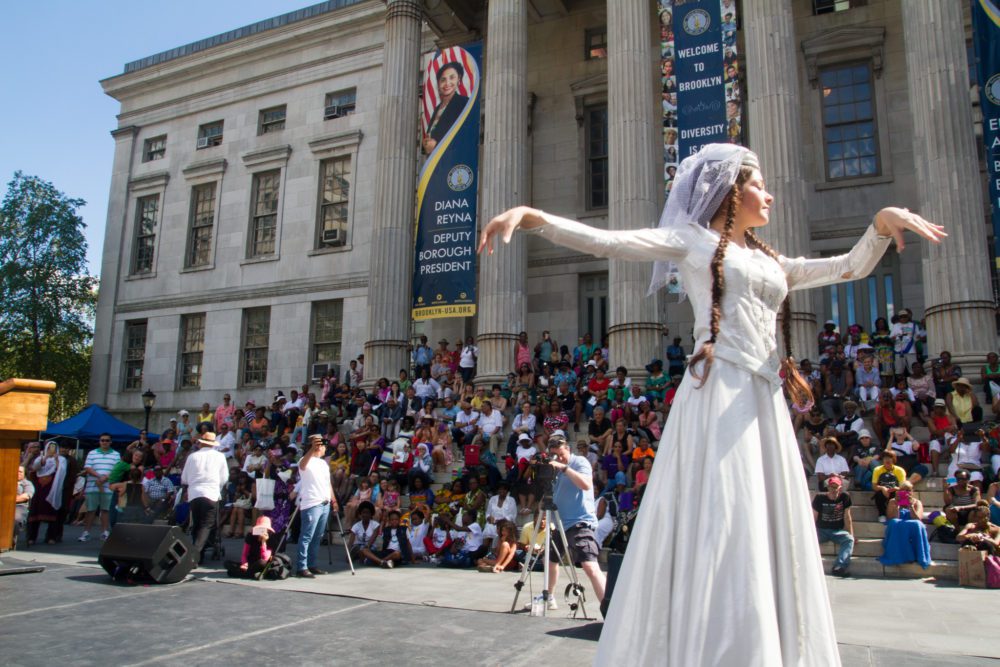





1. Cultural Ambassadors
Cultural organizations and funding institutions, particularly in New York City, have done a great deal to study, support and celebrate the diverse expressive lives of immigrant New Yorkers. But this inclusivity of difference tends to fade when the more systemic and structural inequities within the arts administration ecosystem are being considered.
The Cultural Ambassadors Leadership program aims to equip a generation of cultural leaders whose life’s work is to further the cultural and artistic wellbeing of their communities, and to provide them with the tools they need to accomplish that. It is designed to build a cohort of cultural heritage leaders who can overcome these inequities and become functioning leaders and ambassadors for their respective communities’ arts and culture.
With funding from the Andrew Mellon Foundation, City Lore was able to mentor and support six new Ambassadors from five different NYC communities to engage in a multi-year training program. In addition, we are developing a special publication/website and a tool kit designed to help community activists to mount performances and programs both for their own communities and the general public. These are some of the ideas we are expanding upon.
Media collected will be used achieve the following goals:
- To be a force for the future of media diversity by confronting the bias of today;
- To foster digital inclusion and design methods informed by social justice to amplify the voices of communities often excluded from the public sphere;
- To uncover underlying stereotypes, associations, and modes of narration that media produces and reproduces when covering minority related events;
- To control the narrative about who they are, what art forms they practice, and what they believe in order to to combat modes of narration that media produces and reproduces when covering minority related events and the communities as a whole.
- To assess the economics of keeping components of their traditional practices sustainable.
- Be used as work samples for grant applications
Equitable Digital Distribution
Digital media will be used to create work samples of traditional arts demonstrations, and interview artists about their tradition, and background. These materials will be deposited into the NYSCA Living Traditions website. Created by the New York State Council on the Arts (NYSCA) and City Lore as a statewide initiative, this online content management system was specifically designed to highlight and archive cultural traditions. Unlike YouTube, Instagram, or Vimeo, this site empowers communities to equitably manage, share, and exchange their heritage digitally. It is designed to allow users to implement their own cultural practices for sharing materials and narrating them. The site strives to rebuild trust between culturally rich communities and museums, historical societies, and libraries, which are often the curators of such materials belonging to native cultures.
Equitable and Accessible Event Production Skills
Public presentations of folk and traditional are an important form of communication for diverse cultural communities of New York. They provide opportunities for them to share their systems of beliefs and values through their traditions, to a wider audience. They also serve as pillars that reinforce the importance of safeguarding traditions inside the cultural community. However, lack of funding, diverse income streams, inability to navigate complex technical barriers (sound reinforcement, staging, promotion) and municipal bureaucracy (fire, sound, and event permits) leaves traditional arts presentations vulnerable to curatorial control outside of their community, as well inequitable partnerships with venues and presenting organizations. [It’s rare for contextualized learning, etc.]
Co-Curation and Shared Learning
Each ambassador will partner with one other member of the collective. Each pair will produce two public programs, one for each of their respective cultural communities. One program will be currated for an audience outside of their cultural community, and the other will be focused on inreach —within that cultural community. This enables a shared learning experience that draws from both successful and unsuccessful experiences to deepen collective knowledge. This also supports the idea of distributed leadership while offering a wide range of leadership roles and skill-building opportunities.
Sound and Stage production techniques
- When to use a PA
- How and when to hire sound engineers
- How to run a sound board
- When to get a sound permit
Promotion (outreach and inreach) or just communication?
- Crediting sponsors
- Advertising for outsiders
- Advertising for insiders
- Working with local media
- Cultural responsive and responsible social media
Connecting to City Agencies
In order to move toward a more inclusive cultural ecosystem in New York City, we will teach them how to work with government authorities including the Office of Nightlife, NYC Police and Parks Department on public programs or the Department of Cultural Affairs and Materials for the Arts for funding and other support.
Equitable Access to Funders
We also passionately believe it is important to not only place the onus of improvement on the Ambassadors, but also to help address the unfair policies and administrative systems that they have to navigate. So in addition to increasing the skills of participants, this program also seeks to pilot equitable approaches for funding agencies that encourage multilingualism and an openness to traditional cultures in the grant application process. Each Cultural Ambassador will experiment with video grant proposals.
2. CREATIVE TRADITIONS NETWORK
Honoring the creativity in tradition, City Lore, the Bronx Music Heritage Center, CATCH, Brooklyn Public Library, Brooklyn Roots, and the Center for Traditional Music and Dance are pleased to launch our Creative Traditions Network and convenings. We envision this as a bi-monthly convening of folk and community-based artists to discuss common issues. Although we envision this as a social occasion with food and drink with locations rotating between different boroughs, our first get together took place on Zoom on June 29th, 2021. Bandleader Bobby Sanabria and folklorist Elena Martinez hosted. The theme of the meeting was funding opportunities for individual artists during the pandemic. Future topics may include rehearsal and performance venues, gentrification, and ways to advocate to further the interests of the participants’ respective communities.
These convenings are inspired by the work of Kay Turner and Chris Mulé at the Brooklyn Arts Council, and build on the work of the CATCH consortium (Bronx Music Heritage Center, Mind Builders, the Center for Traditional Music and Dance, the Caribbean Cultural Center African Diaspora Institute, City Lore and New York Folklore) which distributed relief funds early in the pandemic. The Creative Traditions Convening seeks to:
*Create a citywide network of folk and community-based artists who can learn from one another, and advocate for issues relevant to the group.
*Suggest services and resources such as grant writing and creating work samples for folk artists. We cannot promise to provide those services given our schedules, but we can point participants in the right direction.
*Provide a social occasion which enables City Lore, CTMD, the BMHC and other project partners to stay in touch with artists beyond the time spans of individual projects.



